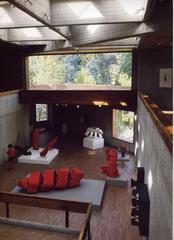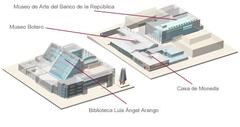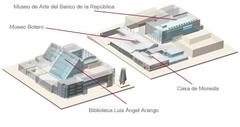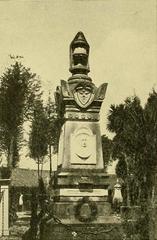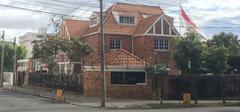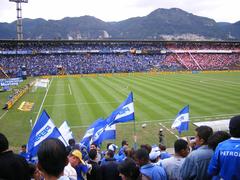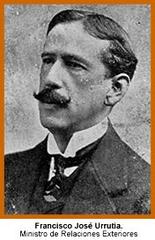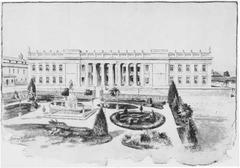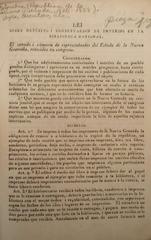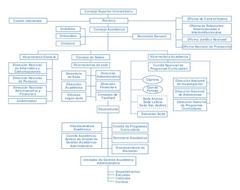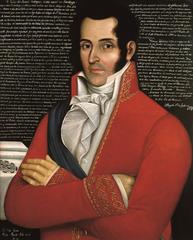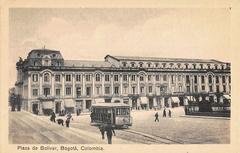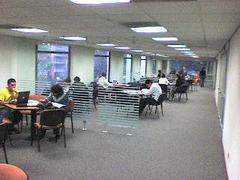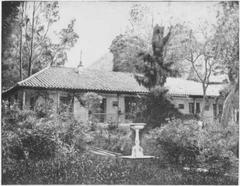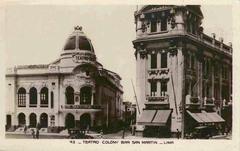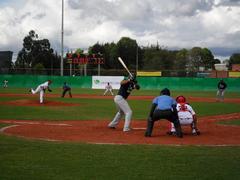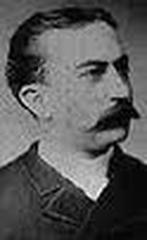
Estación De La Sabana Bogotá: Visiting Hours, Tickets, and Travel Guide
Date: 04/07/2025
Introduction
Estación De La Sabana stands as one of Bogotá’s most emblematic historical landmarks, encapsulating over a century of Colombia’s railway heritage, architectural grandeur, and urban evolution. Officially inaugurated on July 20, 1917, this neoclassical railway station—designed by Mariano Sanz de Santamaría and engineered by William Lidstone—symbolized Bogotá’s early 20th-century drive for modernization and regional connectivity. Situated at Calle 13 with Carrera 18 in Los Mártires, Estación De La Sabana was pivotal in linking the capital with surrounding regions via the Ferrocarril de la Sabana de Bogotá, nurturing the city’s growth and economic expansion (Wikipedia; Colombia Travel).
Despite the mid-20th-century decline in rail use, the station was declared a National Monument in 1984, underscoring its cultural and architectural value. Today, it serves as a vibrant cultural hub, administrative center, and the historic starting point for the acclaimed Tren Turístico de la Sabana—a heritage train journeying through scenic landscapes to Zipaquirá and Nemocón (Infobae; Cambio Colombia). This guide presents essential information for travelers and history enthusiasts, including visiting hours, ticketing, accessibility, nearby attractions, and ongoing urban renewal projects (Bogotá Transit).
Table of Contents
- Historical Overview
- Architectural Significance
- Visiting Information
- Tren Turístico de la Sabana
- Nearby Attractions
- Urban Renewal and Future Developments
- FAQ
- Conclusion and Visitor Tips
- References and Further Reading
Historical Overview
Origins and Early Development
Estación De La Sabana’s origins date back to the city’s aspirations for modernization in the early 20th century. The original railway outpost of the late 1800s became obsolete as Bogotá’s population and economic needs grew. The newly constructed neoclassical station, inaugurated in 1917, became the principal gateway for passengers and freight, connecting Bogotá to the Magdalena River and, by extension, the Caribbean (Wikipedia; Colombia Travel).
Role in Urban and Economic Expansion
As the main hub for the Ferrocarril de la Sabana de Bogotá, the station facilitated urban growth, shaping neighborhoods like Samper Mendoza and La Favorita. It became a social and commercial center, with the area bustling with cafés, hotels, and early skyscrapers—notably the Manuel María Peraza building, Bogotá’s first with elevators (Infobae).
Decline and Transformation
By the 1950s, the rise of motor vehicles and road networks led to a decline in rail transport. The 1954 remodeling added a third floor and removed much of the original ornamentation. The eastern wing was demolished to make way for Avenida Caracas, altering the original U-shaped layout (Wikipedia). Following the 1991 liquidation of the national rail company, the station’s purpose shifted to cultural and administrative uses, but its National Monument status (1984) ensured its preservation.
Architectural Significance
Design and Construction
Estación De La Sabana exemplifies neoclassical architecture—a symbol of modernity and grandeur. The design by Mariano Sanz de Santamaría and execution by William Lidstone feature a stately two-story stone structure with large vertical windows, Corinthian columns, and a U-shaped plan. The façade is adorned with Colombia’s coat of arms and a sculpted condor, reflecting national pride and European railway influences (Wikipedia; Infobae).
Modifications and Preservation
The 1954 renovation introduced a third floor, removing many decorative elements. However, key features—such as the central vestibule and original workshops—remain. As a protected National Monument, the station continues to be a priority for preservation amid urban development (Wikipedia).
Visiting Information
Visiting Hours
- Monday to Friday: 8:00 AM – 5:00 PM (administrative and cultural spaces open)
- Weekends/Public Holidays: Open for guided tours and during Tren Turístico de la Sabana operations (hours may vary; confirm before visiting)
Tickets and Guided Tours
- Station Entry: Generally free of charge
- Guided Tours: Available via cultural organizations or by arrangement with local tour operators; weekends and public holidays are optimal for tours (Colombia Travel)
- Train Tickets: Required for Tren Turístico de la Sabana journeys; purchase online or at the station (Cambio Colombia)
Accessibility
The station offers ramps and adapted entrances for visitors with mobility impairments. It’s recommended to contact the administration or Turistren in advance for specific needs.
Travel Tips
- Wear comfortable shoes for exploring the station and nearby sites
- Use public transport (TransMilenio, buses) for convenience
- Combine your visit with other attractions such as Museo Nacional de Colombia and Parque de los Mártires
- Confirm hours and ticket availability, especially during holidays or special events
Special Events and Cultural Activities
Estación De La Sabana regularly hosts art exhibits, concerts, and community events organized by the Instituto Distrital de las Artes (Idartes) (Infobae). Check their calendar for current programming.
Tren Turístico de la Sabana
Routes, Times, and Experience
The Tren Turístico de la Sabana offers a nostalgic journey through the Bogotá savannah to destinations like Zipaquirá (home to the famous Catedral de Sal) and Nemocón. The trip features restored vintage trains, live traditional music, and panoramic Andean landscapes (Colombia Travel; Cambio Colombia).
Key Facts:
- Departure: Currently from Gran Estación Shopping Center (due to restoration works at Estación De La Sabana)
- Main Stops: Usaquén (in Bogotá), Zipaquirá
- Operating Days: Saturdays, Sundays, and public holidays
- Duration: Approximately 8.5 hours (round trip, including time in Zipaquirá)
- Onboard: Live music, guides, snack services, restrooms, and family-friendly environment
- Accessibility: Facilities for visitors with reduced mobility; recommend advance notice (Zipaquirá Turística)
Tickets and Practical Tips
- Adults (13-59 years): COP $85,000
- Children (3-12) and seniors (60+): COP $80,000
- Children under 3: Free (no seat)
- Purchase: Online via TuBoleta, at departure stations, or with Turistren (advance booking highly recommended)
- Note: Entry to Catedral de Sal is not included—purchase separately
- Arrive Early: Especially on weekends and holidays
- What to Bring: Comfortable clothing, protection against cold and rain, camera, and cash for local purchases
Nearby Attractions
- Catedral de Sal de Zipaquirá: An underground salt cathedral, considered one of Colombia’s top wonders
- Centro Histórico de Zipaquirá: Colonial plazas, churches, and traditional markets
- Parque de los Mártires: Historic urban park near the station
- Iglesia de la Sagrada Pasión: Notable church in the area
Urban Renewal and Future Developments
Estación De La Sabana is central to Bogotá’s urban renewal, with the Plan Parcial de Renovación Urbana La Sabana aiming to revitalize the district through new public spaces, mixed-use developments, and improved transit integration. The station will play a key role as a future multimodal hub, connecting metro, commuter rail, and urban amenities (Bogotá Transit).
FAQ
Q: What are the visiting hours for Estación De La Sabana?
A: Monday to Friday, 8:00 AM–5:00 PM. On weekends and holidays, check for train operations and special events.
Q: Is there an entry fee?
A: Entry to the station is free; train journeys and some tours require tickets.
Q: How do I book train tickets?
A: Online via TuBoleta, Turistren, or at the station (subject to availability).
Q: Is the station accessible for visitors with disabilities?
A: Yes, with ramps and adapted facilities. Contact ahead for specific needs.
Q: Can I bring pets?
A: Only guide dogs are allowed on the train.
Q: What nearby attractions can I visit?
A: Museo Nacional de Colombia, Parque de los Mártires, Catedral de Sal de Zipaquirá, and more.
Conclusion and Visitor Tips
Estación De La Sabana is more than a historic station—it’s a living testament to Bogotá’s transformation and a gateway to Colombia’s railway heritage. Whether you’re marveling at its architecture, boarding the Tren Turístico de la Sabana, or exploring nearby landmarks, planning ahead will help you make the most of your visit. Take advantage of guided tours, cultural events, and urban renewal developments for a comprehensive experience. For the latest updates, follow official tourism channels and download the Audiala app for interactive maps and audio guides.
References and Further Reading
- Wikipedia - Estación de La Sabana
- Colombia Travel - Train Station of the Sabana
- Infobae - Estación de la Sabana: La puerta de oro de Bogotá
- Bogotá Government - Plan de Renovación Urbana La Sabana
- Cambio Colombia - Tren Turístico de la Sabana Recorridos, Horarios y Precios
- El Espectador - Tren de la Sabana en Semana Santa 2025
- Turistren Official Website
- TuBoleta - Viaje en Tren Zipaquirá
- Zipaquirá Turística - Tren de la Sabana



